This kingdom includes both fungi and lichens which are a mutualistic association of fungi and algae or cyanobacteria. Fungi are best observed during the cooler, wetter months of winter and spring. Their size varies from microscopic to more than 50cm across. There is a great variety of fungi in the region. On a short walk during winter or spring, while examining dead and fallen timber, leaf litter and even living plants you are likely to find 20 or more species of fungi.
This group of organisms is not well understood. Many species are yet to be formally described and named and even when they are, their distribution may not be well known. It is worthwhile recording your fungi observations in one of the natural history databases. See ‘Recording Observations’ on this website (Projects page).
Locally occurring examples of some of the groups of fungi are shown below. Photos by Euan Moore
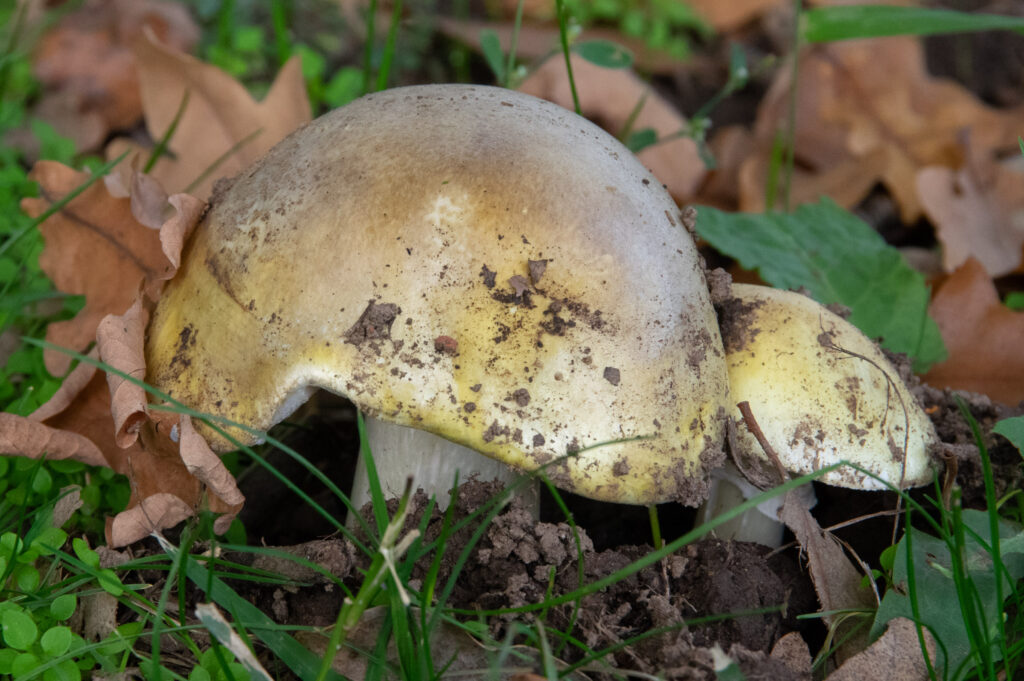
The Deathcap, Amanita phalloides, is an introduced species that is highly poisonous. It may be found under oaks in the Castlemaine Botanic Gardens. Photo: Euan Moore
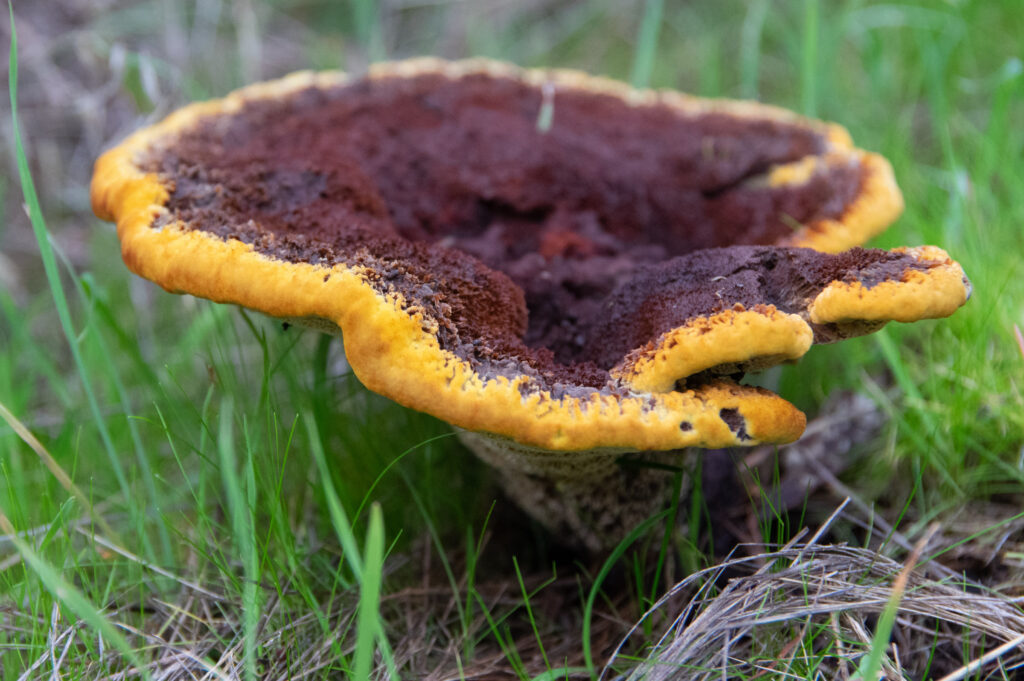
Dyer’s Polypore, Phaeolus schweinitzii, is an introduced parasite of pines. It is a source of natural dyes. Photo: Euan Moore
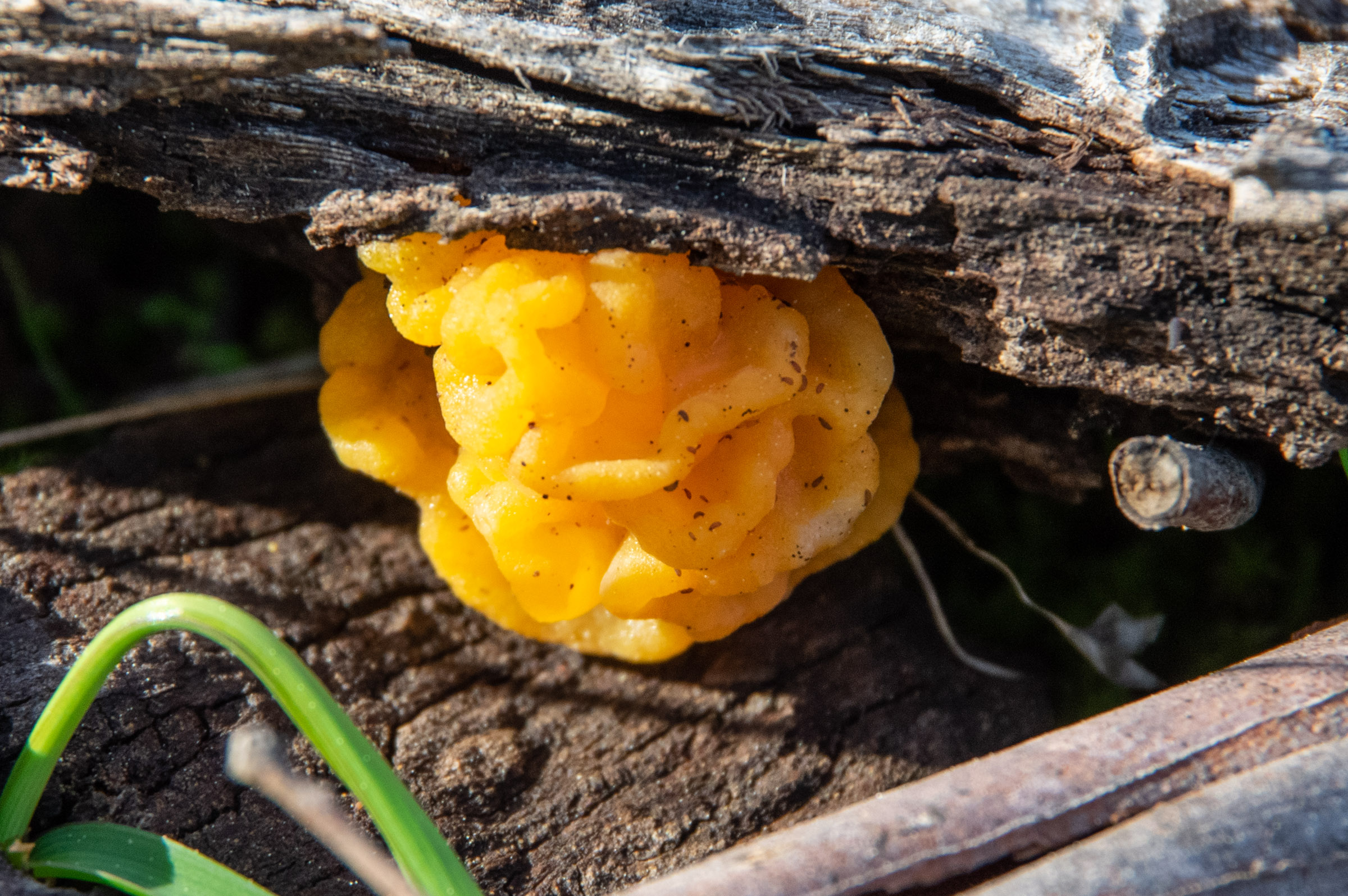
Witches Butter, Tremella mesenterica, grows on fallen timber. Photo: Euan Moore
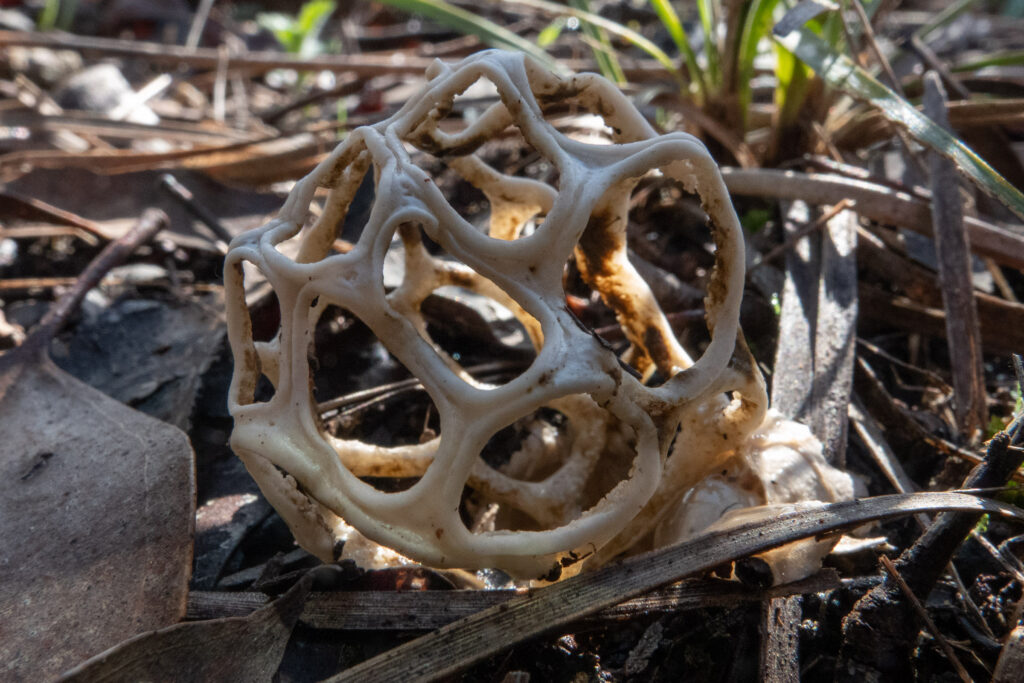
Smooth Cage Fungus, Ileodictyon gracile, occurs in Kalimna Park. Photo: Euan Moore
Lichens are more readily seen throughout the year as they are adapted to harsh conditions including intense sunlight, cold, heat and desiccation. A lichen is a composite organism consisting of an algae or cyanobacteria living in association with a fungus in a mutualistic relationship. They are often seen coating rocks or hanging from branches. Although they can tolerate dry conditions, lichens look their best after rain when the body of the organism is plump with water. Some species respond so rapidly to being wet that it is possible to watch them expand as they rehydrate.
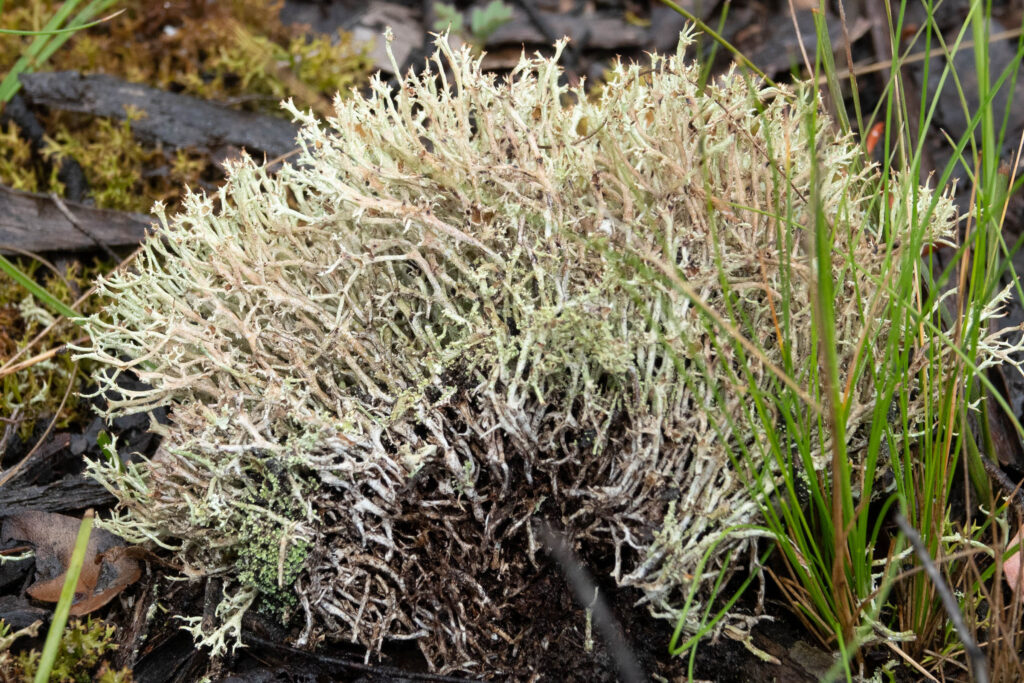
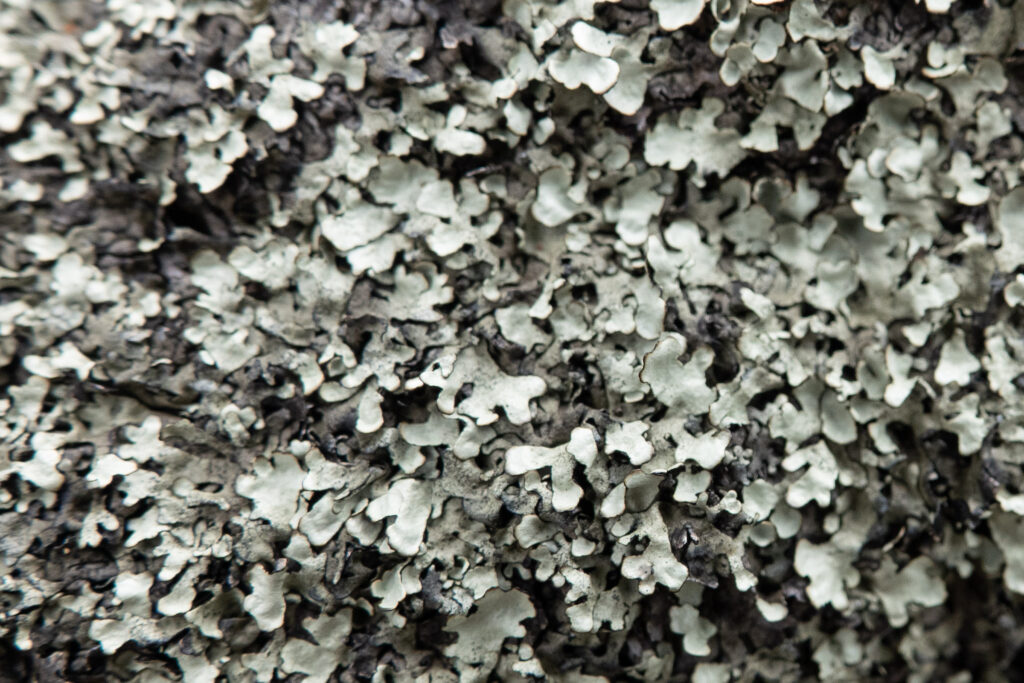
Useful Reference
Clusker J. & Wallace R., Fungi of the Bendigo Region – a Guide to identification, 2nd Edition, 2022